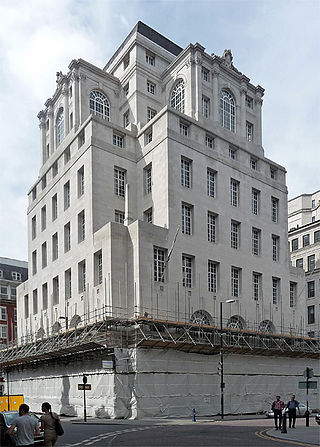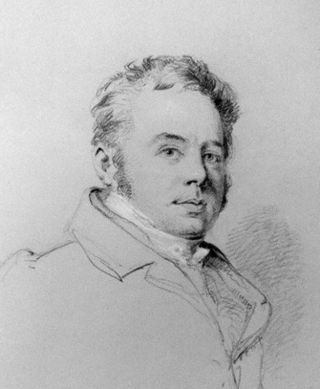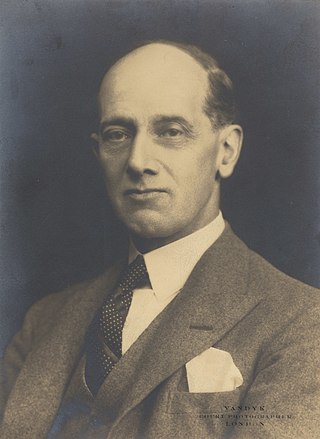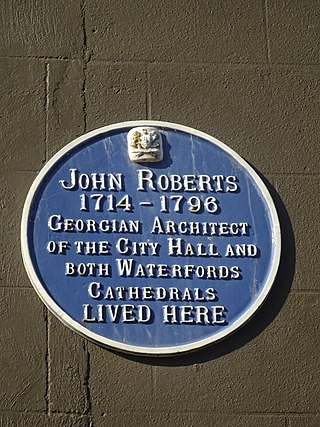Related Research Articles

Sir Edwin Landseer Lutyens was an English architect known for imaginatively adapting traditional architectural styles to the requirements of his era. He designed many English country houses, war memorials and public buildings. In his biography, the writer Christopher Hussey wrote, "In his lifetime (Lutyens) was widely held to be our greatest architect since Wren if not, as many maintained, his superior". The architectural historian Gavin Stamp described him as "surely the greatest British architect of the twentieth century".

Sir John Soane was an English architect who specialised in the Neo-Classical style. The son of a bricklayer, he rose to the top of his profession, becoming professor of architecture at the Royal Academy and an official architect to the Office of Works. He received a knighthood in 1831.
The year 1927 in architecture involved some significant architectural events and new buildings.
The year 1885 in architecture involved some significant architectural events and new buildings.
The year 1855 in architecture involved some significant architectural events and new buildings.
Sir Frederick Ernest Gibberd CBE was an English architect, town planner and landscape designer. He is particularly known for his work in Harlow, Essex, and for the BISF house, a design for a prefabricated council house that was widely adopted in post-war Britain.

100 King Street, formerly the Midland Bank, is a former bank premises on King Street in Manchester, England. It was designed by Sir Edwin Lutyens in 1928 and constructed in 1933–35. It is Lutyens' major work in Manchester and was designated a Grade II* listed building in 1974.

Charles Robert Cockerell was an English architect, archaeologist, and writer. He studied architecture under Robert Smirke. He went on an extended Grand Tour lasting seven years, mainly spent in Greece. He was involved in major archaeological discoveries while in Greece. On returning to London, he set up a successful architectural practice. Appointed Professor of Architecture at the Royal Academy of Arts, he served in that position between 1839 and 1859. He wrote many articles and books on both archaeology and architecture. In 1848, he became the first recipient of the Royal Gold Medal.

Cuthbert Brodrick FRIBA was a British architect, whose most famous building is Leeds Town Hall.

Benjamin Dean Wyatt (1775–1852) was an English architect, part of the Wyatt family.

Harry Bell Measures (1862–1940) was an English architect.

John Buonarotti Papworth was a British architect, artist and a founder member of the Royal Institute of British Architects.
Events from the year 1821 in the United Kingdom. This is a census year.
Francis Reginald Stevens Yorke, known professionally as F. R. S. Yorke and informally as "Kay" or "K," was an English architect and author.

William Curtis Green was an English architect, designer and barrister who was based in London for much of his career. His works include the Dorchester Hotel, Wolseley House, New Scotland Yard, and the buildings, including the former Manor House, in Stockgrove Country Park. He was awarded the Royal Gold Medal in 1942. Around 20 of his designs are listed buildings. He was the younger brother of the craftsman and furniture designer Arthur Romney Green.
Thomas Simpson (1825–1908) was a British architect associated with the seaside town of Brighton. As architect to the Brighton and Preston School Board and the equivalent institution in neighbouring Hove, he designed "a distinguished group of board schools" during the late 19th century, when the provision of mass education was greatly extended. Many of these schools survive and some have listed status. He also worked on five Nonconformist chapels for various Christian denominations, using a wide variety of materials and architectural styles. He was the father of Sir John William Simpson and Gilbert Murray Simpson, who both became architects.

John Goldicutt was a British architect, the son of a bank cashier, who was better known for his architectural drawings than his completed buildings. He won medals in London and Paris for his drawings and a gold medal from the Pope for his drawing of a section of St Peter's, Rome.
Bertha Porter (1852-1941) was an English biographer and bibliographer known for her editorial role in the compilation of the Topographical Bibliography of Ancient Egyptian Hieroglyphic Texts, Reliefs, and Paintings.

John Roberts was an Anglo-Irish architect of the 18th century, working in the Georgian style. Born in the city of Waterford, he is best known for the buildings he designed in that city.

Jacob Owen was a Welsh-born Irish architect and civil engineer of the nineteenth century. His architectural work is most closely associated with Dublin, Ireland. He also contributed extensively to the shaping of public architecture throughout Ireland, through his design of schools, asylums, prisons and other public buildings associated with British rule.
References
- 1 2 "PORTER, FREDERICK WILLIAM - Dictionary of Irish Architects". www.dia.ie. Retrieved 22 October 2017.
- ↑ "The Union Bank of London, Chancery-Lane". The Builder. 24 (1203): 136–137. 24 February 1866.
- ↑ Historic England. "Details from listed building database (1217744)". National Heritage List for England .
- ↑ Antonia Brodie; British Architectural Library; Royal Institute of British Architects (20 December 2001). Directory of British Architects, 1834-1914: Vol. 2 (L-Z). A&C Black. p. 394. ISBN 978-0-8264-5514-7 . Retrieved 22 October 2017.
- ↑ Crowther, Michelle (2 January 2022). "Bertha Porter (1852-1941)". Kent Maps Online. Retrieved 18 April 2024.